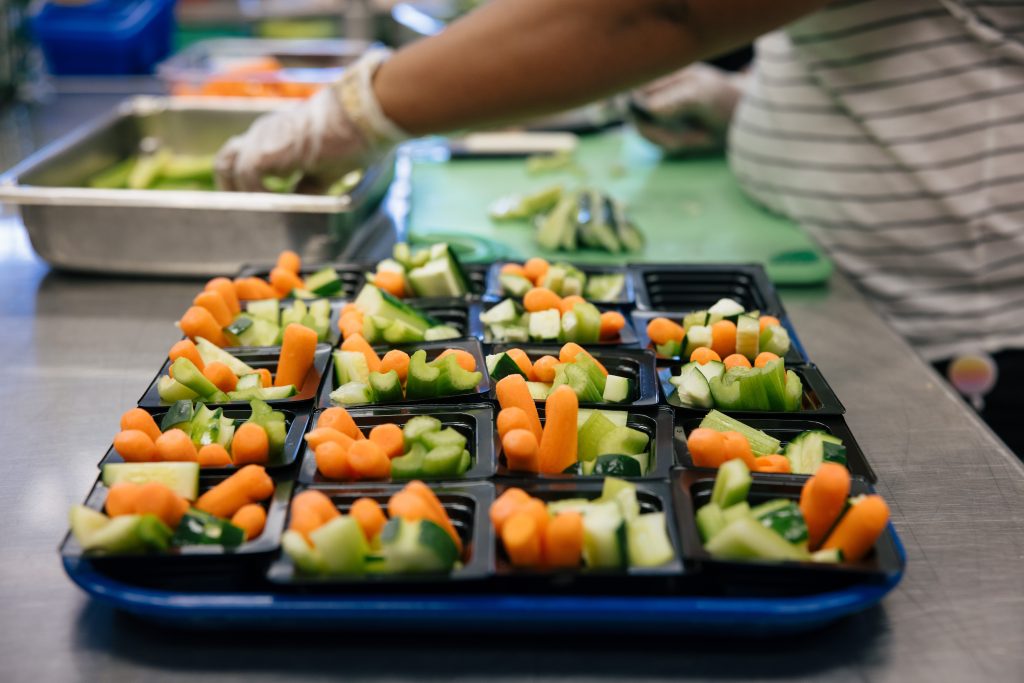
By Jana Rose Schleis, Cap Times
More than 427,000 Wisconsinites have a hard time getting enough food to meet their basic needs, a situation commonly known as food insecurity.
Although that number fluctuates, in 2023 Wisconsin food banks are distributing around the same amount of resources they were at the height of the COVID-19 crisis, according to Michelle Orge, CEO of Second Harvest Foodbank of Southern Wisconsin.
During an online Cap Times Idea Fest panel titled “Getting Food to Rural Wisconsin: Using Innovation, Technology & Collaboration,” Orge shared statistics from the Food Research and Action Center that show families in rural areas have slightly higher rates of food insecurity than metropolitan areas, 15% of all households compared with 11.8%.
Food insecurity can look different in rural areas and requires a community-specific response, the Idea Fest panelists said. The seventh annual thought festival organized by the Cap Times started Sunday and continues through Saturday, featuring both virtual and in-person events.
During Monday’s session, Aimee Davis with Alliant Energy announced the company’s $1 million Rural Hunger Initiative to “provide better access, more choice and fresh food to those in need in rural communities.”
Davis said food insecurity is complex, especially in rural areas. The Alliant Energy Foundation hopes to begin a process that generates a variety of solutions specific to rural community needs.
Beyond the obvious nutritional consequences, lack of access to food can contribute to additional health problems. Food insecurity can cause chronic stress, which then increases the risk of diabetes and hypertension, said panelist Adrian Jones, director of community health improvement at UW Health.
When food is out of reach, its scarcity can compound mental health challenges for adults and children, Jones said.
“There’s increased anxiety, depression, and also sleep deprivation,” Jones said.
In rural areas, food insecurity can be hidden, but that doesn’t mean it isn’t present, Orge said.
“It’s our neighbors. It’s the folks that your kids are going to school with,” Orge said.
Despite public programs dedicated to ensuring basic needs are met, folks in rural communities can still fall through the cracks.
“Public assistance benefits, SNAP, WIC, school meals and things, are so vital but they don’t cover everything,” Orge said.
Along with Patti Habeck, president and CEO of Feeding America Eastern Wisconsin, Orge, Davis and Jones discussed ways to find creative solutions to rural hunger needs by engaging with existing community resources.
Innovative solutions to rural food insecurity will come from using a community’s strengths, Habeck said.
“It’s not so much about what can we bring into the community, it’s understanding what’s already in a community,” she said.
“Then finding innovative solutions to be able to utilize those strengths of those rural communities and address hunger differently.”
Habeck and Davis noted that while supply chains were disrupted during the COVID-19 pandemic, rural areas found themselves slightly better off because of their proximity to where food is grown. Alliant’s initiative aims to leverage those types of local resources to find long lasting solutions to rural hunger, Davis said.
“How can we think of new ways to partner with our farm communities and farmers to actually get fresh, nutritious food that’s grown locally to the folks that are in need?” she said.
The panel of hunger-relief experts agreed that solving food insecurity in rural areas won’t be accomplished with a one-size-fits-all approach.
The local food system needs to be considered and understood before solutions are prescribed, said Habeck, from Feeding America, which collects donated money and makes food purchases for distribution to local pantries and other community sites.
“For example, it would be easy enough for me to make a large purchase and bring a semi load of a food product into a small community and distribute it,” she said. “The challenge to that is if I did that consistently I may unintentionally be causing some harm to the local food system.”
Ideally, rural hunger initiatives should complement the existing food infrastructure. An influx of outside food donations can disrupt local grocery business and risk creating a food desert. Assistance should fill gaps in food access or affordability.
Orge with Second Harvest Foodbank of Southern Wisconsin hopes to use the Alliant investment to provide those in need in rural areas with a food debit card that can be used at any store that sells food.
“We want to strengthen local food economies, strengthen local communities, and this is a way to be able to have the money continue to be spent in those communities,” Orge said.
Habeck said the Alliant investment allows her organization to tackle the issue in new ways and affords Feeding America space to find original answers.
“In Wisconsin that hunger statistic is so high, but you have to get past those numbers and start thinking of the faces and the families that are behind it,” Habeck said. “Because that is actually what motivates you to find those innovative solutions.”
